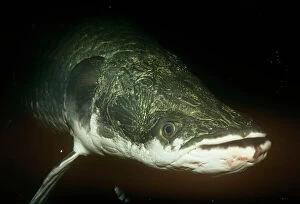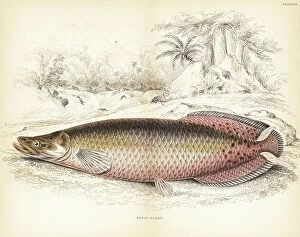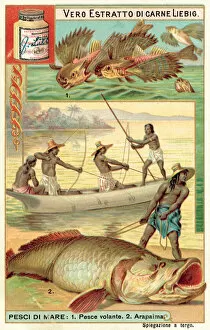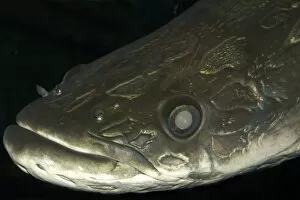Arapaima Collection
Discover the majesty of the Arapaima, also known as Pirarucu, a true Amazonian giant
All Professionally Made to Order for Quick Shipping
Discover the majesty of the Arapaima, also known as Pirarucu, a true Amazonian giant. With a close-up of its intricately textured head, this ancient fish showcases its unique scales and powerful jaws. Caught on quota in the Amazon basin of Brazil, the Arapaima, scientifically named Arapaima gigas, is the world's largest freshwater fish. Its size and striking appearance have made it a sought-after catch for anglers and a vital part of the local ecosystem. This chromolitho illustration also highlights the Arapaima's dynamic interaction with other Amazonian wonders, such as flying fish, adding to its allure as a symbol of the rich biodiversity of the Amazon rainforest.











